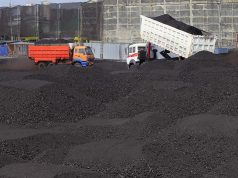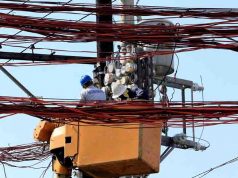
MANILA – The Philippines’ current account deficit could increase by $1.75 billion each year by 2021 because of the doubling in the price of world-traded thermal coal since the start of last year, the Institute for Energy Economics and Financial Analysis (IEEFA) said.
In a new analysis released on Monday, the institute said at current market prices for benchmark coal of $100 per ton, the Philippines is poised to spend $3.5 billion every year for 35 million tons per annum (MTPA) of imports by 2021 in the International Energy Agency (IEA) Mid-Term Outlook.
“The unpredictability of the coal market over the past year will drive higher electricity prices and threatens the industrial strategy of the Philippines,” said Sara Jane Ahmed, an analyst at IEEFA.
“The dramatic price spike should signal to the Philippines’ Energy Regulatory Commission (ERC) to put an end to the automatic pass-through of costs, which means ratepayers absorb the price increases and utilities have no incentive to adopt cleaner, cheaper renewable energy,” she added.
IEEFA said raising coal imports results in commodity price and currency risks for local electricity consumers, with its negative impact on the current account deficit, which it said is “a significant driver of imported inflation.”
“The Philippines should avoid locking itself into further new long-term coal-fired power plant contracts,” Ms. Ahmed said. “Renewable energy infrastructure is deflationary, and technology gains combined with economies of scale mean in many countries, including the Philippines, it is already the least cost option.”
IEEFA cited India’s experience where it said on the back of a doubling of renewable energy installation activity in 2016 to 2017, solar and wind tariffs have both fallen nearly 50% since the start of last year. This set record low wholesale electricity tariffs of $38 per megawatt-hour. New import thermal power plants are unable to compete at this low pricing.
The institute said the doubling of the coal price to almost $100 today from $50 in January 2016 was largely “a result of Chinese central government policy aimed at an orderly coal market transition by maintaining a degree of profitability for domestic Chinese coal miners, while the central government forges ahead with an accelerating transition to clean energy.”
It said China is set to install 50 gigawatts of solar in 2017 alone, a record for a single country in a year.
It said due to the rise of the global green bond market, capital is available for countries that are willing to set a clear policy direction to transition to clean energy.
“The doubling of the thermal coal price over the past 12 months should be another wake-up call for governments that it is a high-risk $20-billon stranded asset gamble,” Ms. Ahmed said.
“Governments should pursue renewable energy as the path to enable industrial growth,” she added.
IEEFA conducts research and analyses on financial and economic issues related to energy and the environment. Its mission is to hasten the “transition to a diverse, sustainable and profitable energy economy and to reduce dependence on coal and other non-renewable energy resources.”








